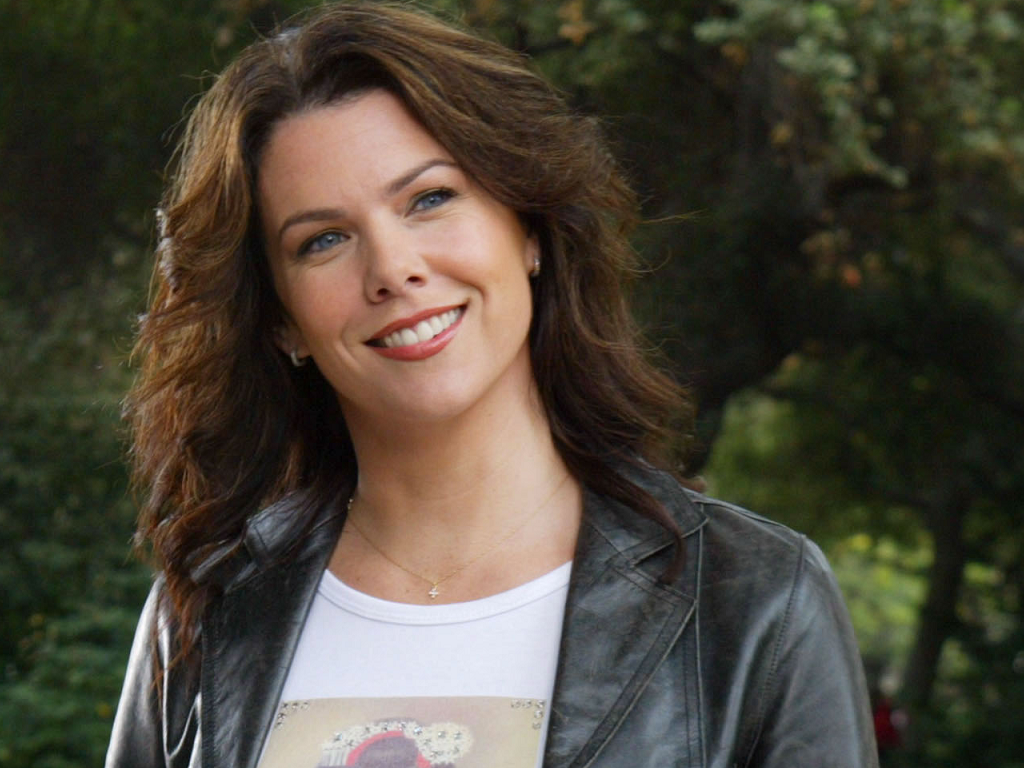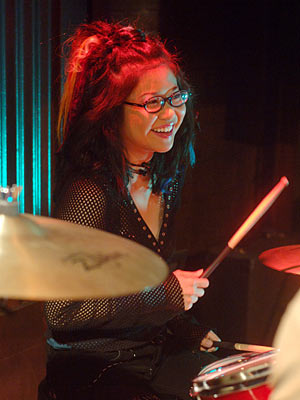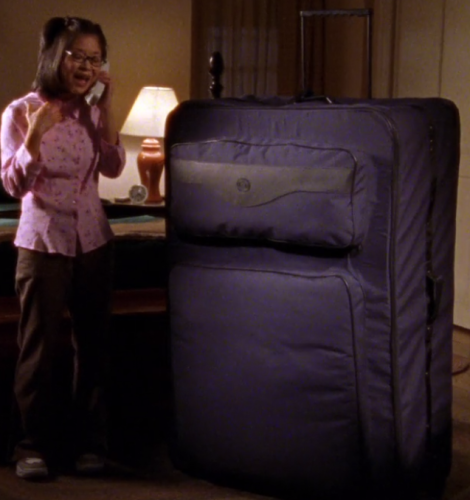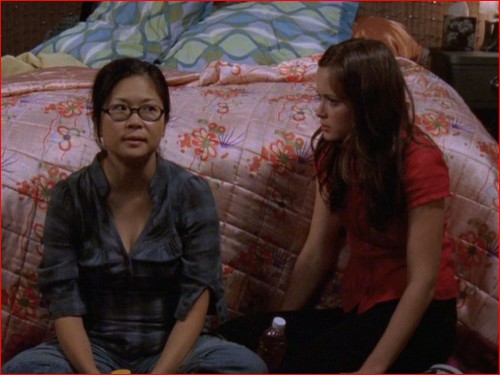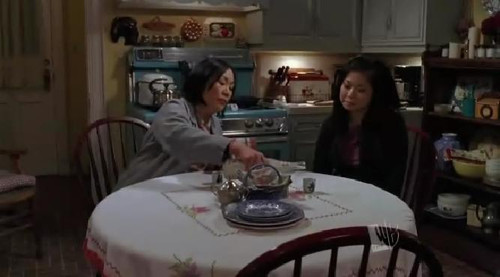This guest post written by Scarlett Harris appears as part of our theme week on Unpopular Opinions.
We all know the famous “Cool Girl” screed from Gillian Flynn’s 2012 novel, Gone Girl. But since it’s been four years since the book’s release, and two years since its big screen adaptation, here’s a refresher:
“Men always say that as the defining compliment, don’t they? She’s a cool girl. Being the Cool Girl means I am a hot, brilliant, funny woman who adores football, poker, dirty jokes, and burping, who plays video games, drinks cheap beer, loves threesomes and anal sex, and jams hot dogs and hamburgers into her mouth like she’s hosting the world’s biggest culinary gang bang while somehow maintaining a size 2, because Cool Girls are above all hot. Hot and understanding. Cool Girls never get angry; they only smile in a chagrined, loving manner and let their men do whatever they want. Go ahead, shit on me, I don’t mind, I’m the Cool Girl.”
Watching Gilmore Girls for the first time in the lead up to the revival because, even though I was in its target demographic, somehow I missed it the first time around, it hit me that Lorelai Gilmore was a Cool Girl long before Flynn, and Buzzfeed writer Anne Helen Petersen, popularized the term and Jennifer Lawrence became the living embodiment of it. Let me count the ways.
Not Like Other Girls.
The Cool Girl is positioned as being so because she’s not like other women. You’ll notice that apart from Sookie St. James (Melissa McCarthy), Rory (Alexis Bledel), and the select few townswomen that put the Gilmore Girls on a pedestal, Lorelai (Lauren Graham) doesn’t play nice with other women. In fact, I would go as far as to say she disdains them. While the problems between Lorelai and her mother Emily (Kelly Bishop) are for another article, one of Lorelai’s many criticisms of her mother is that she’s concerned with manners, proper presentation, and social acceptance, all traditionally feminine markers. Lorelai — and the television show as an extension of her — vilifies other women who share traits similar to her mother, such as Sherry (Madchen Amick) and Lindsay (Arielle Kebbel), for catering too much to others, particularly men. For example, Lorelai mocks Sherry for being excited for her baby shower and Dean’s (Jared Padalecki) new bride, Lindsay, for bringing baked goods to his workplace and wanting to be a good wife. But in Lorelai’s cultivation of her Cool Girl persona, she also makes a covert effort to appeal to men in just as damaging ways, placing herself as different from and therefore better than those other girls. Even the long-suffering Michel (Yanic Truesdale) displays too much femininity for Lorelai’s taste, making him the butt of her jokes. Gilmore Girls creator and showrunner, Amy Sherman-Palladino, said that the character “was pretty tough, made her own money, but she also liked men. She wasn’t demonizing them.” Because Cool Girls love men while other girls don’t.
All About Lorelai.
In the mini-series Gilmore Girls: A Year in the Life, during an argument with her daughter — because what would a revival be without at least one? — Emily says, “Nothing ever matters to Lorelai Gilmore except what she wants, what she feels,” a recurring theme for Lorelai throughout the show. One of her paramours, Digger, picks up on this on their first date. “Does everything have to be fun for you?” he asks when Lorelai expresses restlessness with an intimate dinner in a private room of a happening club. Lorelai doesn’t care that she shows up to Rory’s first day of Chilton in cowboy boots and tie-dye, or about the parade of on-again off-again men affecting her daughter’s life, or about Luke’s (Scott Patterson) obvious discomfort with the workmen renovating their house seeing her naked because she’s just one of the guys except, you know, one they want to fuck. There are no gay men in Stars Hollow, a fact the revival makes light of when the town struggles to find LGBTQIA residents to march in its first ever gay pride parade. Lorelai’s a cool mom who just wants to have fun and [insert whatever other pop cultural stereotype about women here].
If Gilmore Girls can be associated with one thing, it’s food. Cherry danishes, coffee, pizza, Pop Tarts, Tater Tots and Red Vines. As we read above, Cool Girls are all about eating the food that other, not-as-Cool Girls would shun in favor of their diets. Though Lorelai and Rory hate exercise as much as they love junk food, at least Gone Girl’s protagonist Amy Dunne had the decency to expose the lie that eating junk food while movie marathoning and seldom exercising won’t get you the lithe bodies of the Gilmore clan.
Gilmore Girls, Indeed.
Though Lorelai raised a child on her own as a teenager and the Cool Girl is more than capable of handling day-to-day inanities and complex hijinks herself (hello, Amy Dunne), the archetype is imbued with a certain childlike quality. Despite her propensity for playing 40-year-old mothers, Hollywood Cool Girl Jennifer Lawrence (who’s 26) certainly has that carefree youthfulness about her. As does Emma Stone and Anna Kendrick (you’ll notice that Cool Girls are almost always white). Because Lorelai’s childhood was cut short, plus the fact that her best friend is her teenage daughter, her immaturity often shows through. She doesn’t care that she disturbs the sleep of Rory during exams or Luke when he has to get up for an early delivery: it’s snowing in the middle of the night, damn it, and Lorelai will frolic in it because she’s quirky like that.
What a Difference A Year in the Life Makes…
Gilmore Girls: A Year in the Life does make some strides in dismantling the Cool Girl stereotype. When Rory tells her mother that she’s writing a book about their relationship, Lorelai is displeased, asserting that, “I went to all this effort for many, many years making sure that people only knew what I wanted them to know.”
Cool Girls are supposed to not give a fuck, cultivating an air of carefree- and go-with-the-flow-ness. In actuality, a lot of effort goes into the artifice of the Cool Girl, just like the no-makeup look. Lorelai drives a beat-up old jeep because a less conspicuous car just won’t do, but as season seven draws to a close we saw it starting to sputter and, ten years later in the revival, she’s still hell-bent on keeping it, if much of her other Cool Girl traits have dissipated with age. Because as Flynn writes, the Cool Girl doesn’t exist effortlessly: a lot of work actually goes into maintaining her air of apathy leading us to wonder what even is a Cool Girl and why is Lorelai — and by extension, us — holding on to her so dearly?
Lorelai Gilmore and Gilmore Girlsitself were products of their time. Seldom would television shows of today get away with the homophobia, ableism, and racism of the original series except, you know, in its Netflix revival, which was just as blatant, if not more crafty, in its bigotry.
Ten years have passed since husband and wife team Amy Sherman-Palladino (creator, showrunner) and Daniel Palladino (producer, writer, director) departed the series but you wouldn’t know it from the stagnant feel of the revival. Their vice-like grip on the penultimate season and their apparent bitterness that Gilmore Girls continued without them meant that Rory regressed while Lorelai tried desperately to find some meaning after her father’s death while reckoning with her fading Cool Girl persona.
Maybe a modern-day Lorelai would be more informed, and thus, angrier at the feminine ideal she and the women around her have been forced to embody. Angelica Jade Bastién writes of “the particular brand of anger that blooms in intelligent women when you realize how hard it is to live by your own definition of being a woman,” in a piece about Gone Girland the femme fatale. Lorelai left a stifling home for a just-as-stifling small town that equates her worth as a woman with what she can offer the town (’s men), of which the Stars Hollow basket auction is just one example. Perhaps a thoroughly modern Lorelai would be forging her path through single motherhood in the big city, as Rory attempted in her career as a journalist. We may never know, even if there is a second/ninth season of the show, because Lorelai Gilmore’s creators seem intent on upholding archetypes instead of examining what it actually means to be a woman — and not the titular Girls — today.
See also at Bitch Flicks:
Emily Gilmore and the Humanization of Bad Mothers
The Kims Next Door: Korean Identity on Gilmore Girls
Pop-Tarts and Pizza: Food, Gender, and Class in Gilmore Girls
The Paradox of the Gilmore Diet in Gilmore Girls
Scarlett Harris is an Australian writer based in New York City. You can follow her on Twitter @ScarlettEHarris and read her previous published work at her website The Scarlett Woman.
